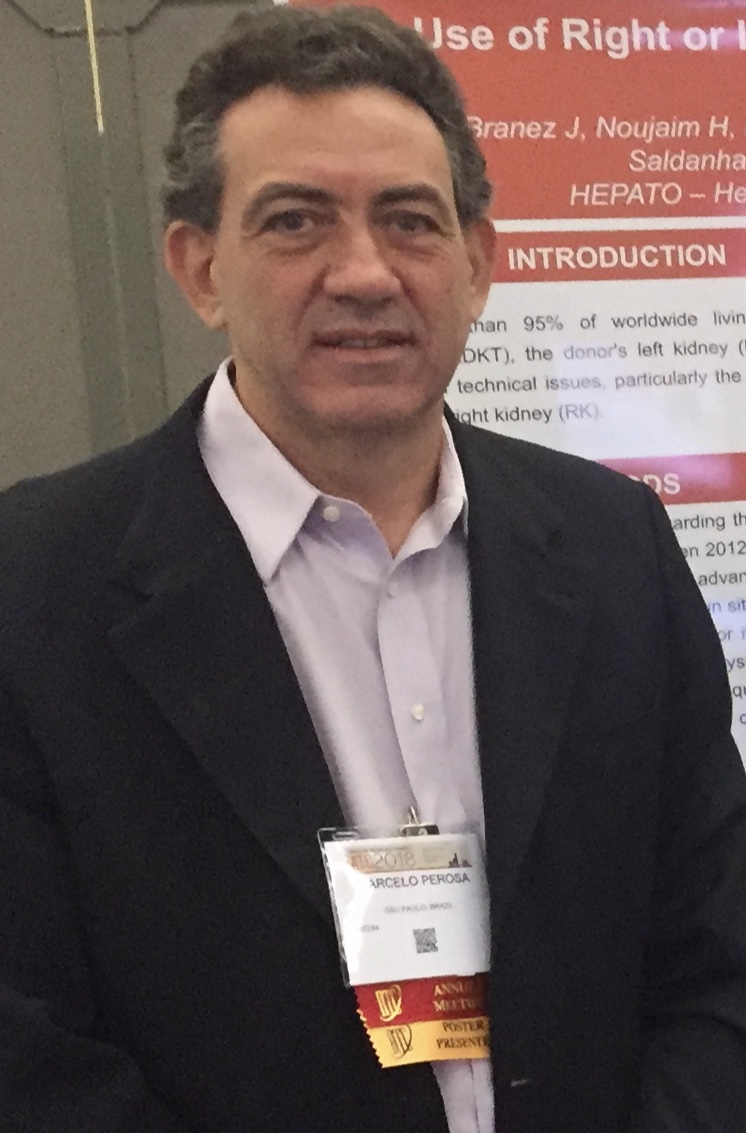
Transplant Surgeon and Director of Pancreas and Kidney Transplant Program - Leforte Hospital São Paulo - Brazil Largest Pancreas Transplant Program of Latin America with over 1000 PT performed Councillor of IPITA
Intraoperative versus postoperative administration of rabbit antithymocyte globulin in pancreas transplantation
Marcelo Perosa 1, Ana Claudia Vidigal1, Nicole M Valerio2, João A Dotta2.
1Abdominal Organ Transplant, Leforte Hospital, São Paulo, Brazil; 2Medical School, University Sao Caetano Sul, São Paulo, Brazil
Literature on the timing of rabbit antithymocyte globulin (rATG) induction and its effects on pancreas transplant(PT) outcomes is limited. Although recommended that the first dose be given intraoperatively, this may present clinical practice risks and challenges. Our objective was to assess the impact of the timing of the first dose of rATG on PT outcomes.
We retrospectively analyzed 233 technically successful PT performed from 2018 to 2021, being 126 SPK, 6 simultaneous pancreas and living-donor kidney(SPLK), 87 PAK and 14 PTA. Patients were distributed in two groups: those who had received intraoperative thymoglobulin(IOT) and recipients that received postoperative thymoglobulin(POT);in this latter group, patients received the first rATG dose in average after 45.2 hours for SPK(24-168h) and 32 hours(6-96h) for solitary PT(S-PT) +SPLK transplants. RATG were given at 1-1.5mg/kg/dosage with a cumulative total dose of 5mg/kg for SPK and 7mg/kg for S-PT+SPLK according to total lymphocyte count. The inclusion criteria were patients with 1-year patient survival who received at least 3 doses of rATG. Primary end-points included rate of biopsy-proven acute rejections and long-term immunologic graft failure. Secondary end-points were 1-year estimated glomerular filtration rate(eGFR) for SPK patients and the appearance of dnDSA. Pancreatic enzymes and serum creatinine were compared between IOT and POT patients at 1, 6 and 12 months post-transplant. A separate analysis was conducted for the 126 SPK and 107 S-PT+SPLK.
Among 233 PT, 108 received IOT and 125 POT. Recipient age was similar between IOT and POT groups(36.7 x 36.4 years) and IOT group presented more patients with cPRA>0 than TPO both in SPK recipients(30% x 7.2%,p=0.002) as in S-PT+SPLK(26.2% x 14.3%,p=0.018). Serum creatinine and eGFR(76.9 x 70.3,p=0.25) were similar at 1, 6 and 12months post-transplant between IOT and POT for SPK patients as were pancreatic enzymes for all groups.
Among SPK patients, the occurrence of rejection(25.6% x 24.1%), dnDSA(9.3% x 6%), 1-year kidney(97.7% x 97.6%) and pancreas(97.7% x 100%) graft survivals and kidney immunologic failure(4.6% x 2.4%) were similar between IOT and POT groups,respectively. The rate of kidney DGF was significantly inferior in the IOT group among SPK patients(9.3% x 42.2%, p<0.001). The comparison between IOT and POT patients among S-PT+SPLK transplants also showed similar rate of rejections(40% x 42.9%), dnDSA(16.9% x 16.7%) and 1-year pancreas graft survival(83.1% x 95.2%). IOT patients presented higher immunologic pancreas failure both among SPK(7% x 0,p=0.015) as in S-PT+SPLK(27.7% x 9.5%,p=0.023).
When rATG first dose is delayed even for several days, similar rates of rejections, kidney and pancreas graft survival are achieved compared to IOT; however higher rate of kidney DGF occurred in SPK- POT group. These results support consideration of a more flexible timing of the first dose of rATG in PT.